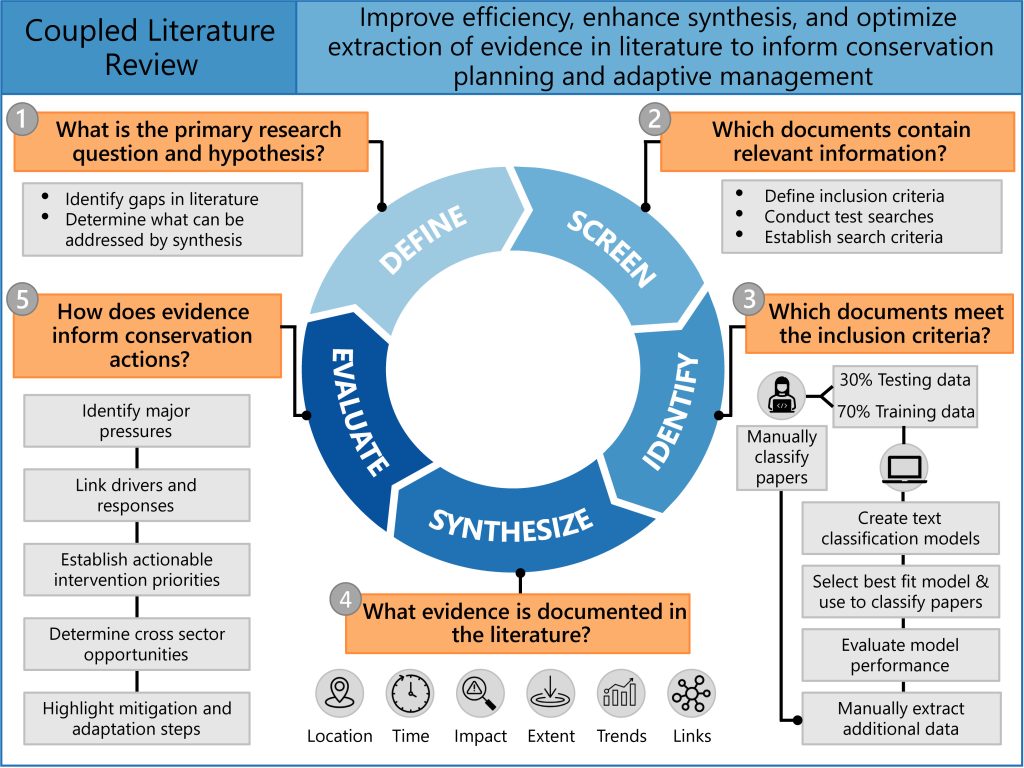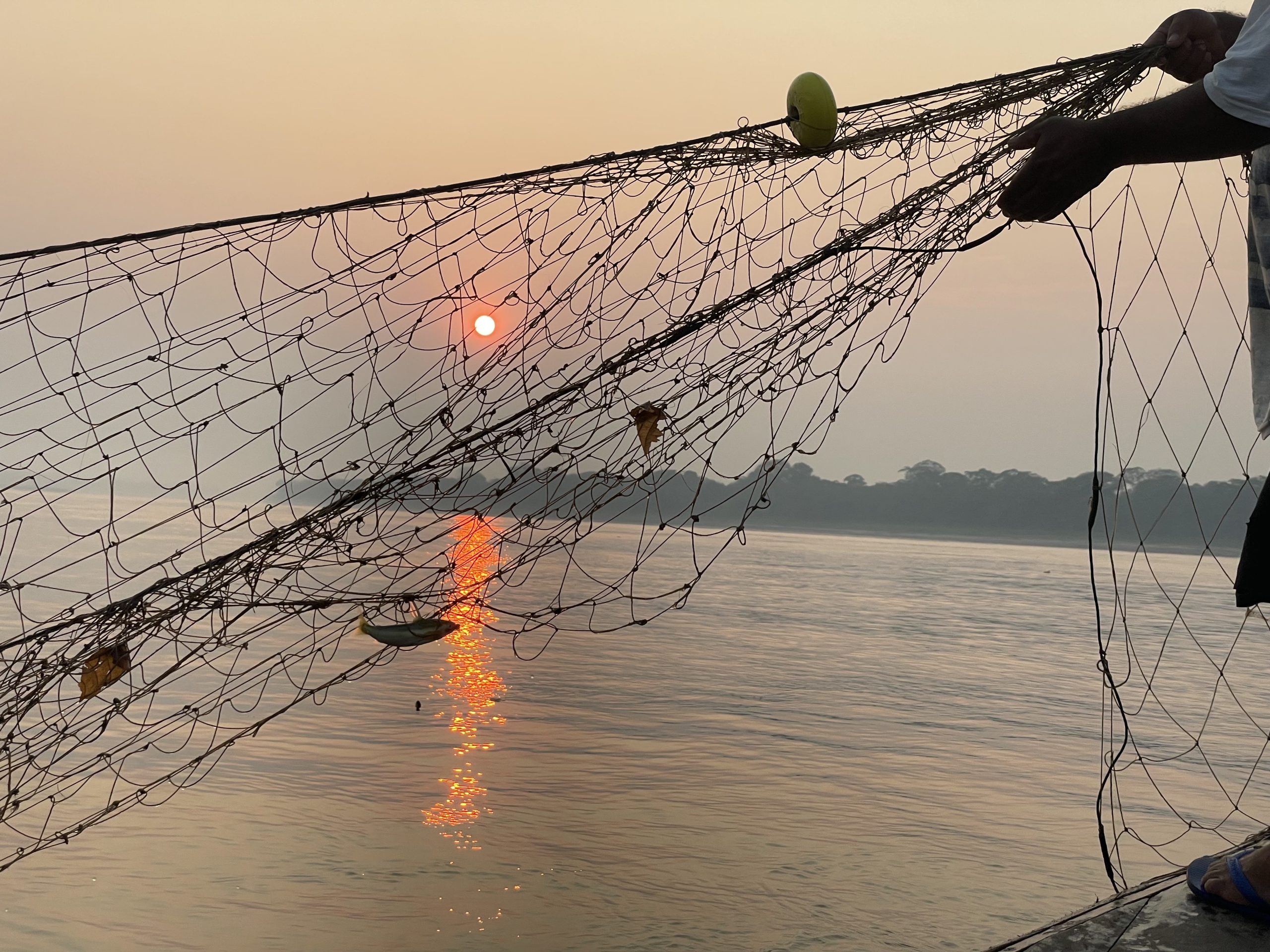Feature image: A fisher retrieving his nets in the Rio Madre de Dios in Bolivia. Previously, fishers in the area reported abundant catches but nowadays it increasingly common for fishers to return home empty-handed because of impacts from dams and gold mining. (Photo credit: Gretchen Stokes)
As human impacts on the environment rapidly accelerate, so does the need to understand those impacts and develop strategies to build resilience amidst growing threats. Often, researchers can identify the larger causes of environmental degradation (‘drivers’, such as climate change or pollution), observe changes in the environment (‘impacts’, such as habitat loss or poor water quality), and notice how species respond (‘responses’, such as changes in reproduction or population declines) to these changes.
However, it is much more challenging to link drivers, impacts, and responses as a direct cause-and-effect relationship. For example, illegal logging might cause increased soil erosion along a river and fishers may catch fewer fish, but documenting a direct link between land use change and fish mortality can be difficult. Yet, uncovering these driver-impact-response links can help identify opportunities for interventions and appropriate conservation actions.
Untangling the links
One logical approach to understanding these links is utilising documented evidence of drivers, impacts, and responses already published in the scientific literature. There has been a surge in the number of publications about global environmental change, which is useful for providing more evidence but challenging because of the high volume of papers, and in turn requires substantial effort to sift and extract information. However, artificial intelligence tools such as machine learning—computers that learn to detect patterns and make predictions based on the data—can help overcome this challenge.
In this study, we focused on understanding driver-impact-response links across 45 river basins and large lakes with the highest freshwater fish catch. Freshwater fish comprise over half of the world’s fish species and are a vital food source for billions of people. Yet, they are some of the most threatened animals on the planet.
We searched for relevant literature using keywords and extracted 9,336 abstracts for review. After reviewing over half of them, we realised that machine learning could help sort abstracts “with threats” and “without threats” into two categories. We trained and tested four computer models and chose the one that best detected abstracts with threats to sort the remaining abstracts. This process taught us a few things.

Lessons learned
First, we discovered that some threats are better documented than others. For example, pollution and dams were the most documented drivers and the most frequently linked to negative fish responses. Other drivers known to have substantial impacts on fish, such as climate change, were seldom documented with direct fish responses. This may be because it is difficult to link climate impacts in real-time, and because some drivers have complex interactions with other drivers.
Second, we learned that machine learning was much better at classifying irrelevant abstracts (those without threats) than at correctly classifying those with threats. We think this may be due, in part, to the unstandardised nature of fisheries literature. For instance, defining a fishery can be variable, so it is not surprising that computers would have a hard time learning text patterns with nuanced language. This contrasts with other fields like medicine, where language is more standardised for medical reports. High performance in classifying irrelevant abstracts is still extremely useful and quickly helped us eliminate thousands of papers.
Through this study, we were able to demonstrate a successful application of machine learning to improve efficiency—by over 50 percent—and optimise the extraction of evidence to inform conservation planning. While neither method of evidence synthesis (human or computer) could function independently, the combination of both methods proved useful.
Since ecologists often lack the specialised training to apply complex methods in machine learning, we also created a toolkit for users to extract evidence and understand performance metrics and outputs. Overall, our study provides a transdisciplinary bridge from computer science to ecology and a useful toolkit for evidence synthesis amidst accelerating global environmental change.
Further Reading: Stokes, G. L., A. J. Lynch, J. V. Flores, J. P. Wong, C. Morang, C. Romulo, S. Funge-Smith et al. 2024. Computational approaches improve evidence synthesis and inform broad fisheries trends. Conservation Science and Practice 6(8): e13167. https://doi.org/10.1111/csp2.13167.






